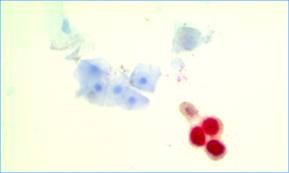搜索结果: 1-15 共查到“医学 cancers”相关记录38条 . 查询时间(0.062 秒)


NSF provides support for drug discovery platform for hard-to-treat cancers(图)
NSF provides support drug discovery platform hard-to-treat cancers
2020/5/9
A new round of support will help a Purdue University-affiliated startup further develop a platform designed to create drugs for people with hard-to-treat cancers.Akanocure Pharmaceuticals, Inc., ...
2017激素依赖性癌症戈登学术会议(The 2017 Gordon Research Conference on Hormone-Dependent Cancers)
cancer hormone dependent cancer
2017/1/14
The major themes will include understanding cancer pathways and processes, how these are corrupted or altered during cancer progression and how novel therapies work mechanistically and what impact can...

Evaluation of p16/Ki-67 dual staining in detection of cervical precancer and cancers: a multicenter study in China(图)
病理活检;Ki-67;双染免疫细胞化学;中国妇女;宫颈癌
2022/3/8
本研究为首次关于p16/Ki-67双染免疫细胞化学在中国妇女宫颈癌筛查中的报道,是一项受国家自然基金资助的多中心研究。
Although consumption of whole-grain foods seems
to reduce the risk of several types of neoplasms, the potential
influence of a diet rich in starches and refined grains is less clear.
Is genomics making rare cancers common and common cancers rare?
genomics rare cancers tumour
2015/4/21
While rare cancers account for a large percentage of total cancer cases, there has been little improvement in the overall survival rates for patients with rare cancers. This can partially be attribute...
Molecular insights influencing the management of head and neck cancers
Molecular insights head and neck cancers
2015/4/21
Head and neck cancers represent a clinically diverse group of tumours with distinctive molecular features. Understanding the importance of characteristic molecular changes has permitted the definition...
Over half of all gynaecologic cancers are rare: barriers and challenges to improving outcomes
gynaecologic cancers treatment
2015/4/21
available evidence from randomised controlled trials to guide management for an individual patient. Over 50% of gynaecological cancers are classified as ‘rare’, which creates additional challenges in ...
Advances in our understanding and management of sarcomas–rare bone and soft tissue cancers
sarcomas rare bone and soft tissue cancers
2015/4/21
Bone and soft tissue sarcomas are rare, accounting for approximately 1% of all adult solid malignant tumors. Although these cancers are categorised under the same banner of ‘sarcoma’, they in fact rep...
Rare Cancers: how far have we come and where should we be heading? Extending evidence-based care to people with rare cancers
rare cancers cancer types patients
2015/4/21
Approximately one third of Australians who die of cancer do so from one classified as being ‘rare’. While there have been significant recent improvements seen for many patients with common cancer type...
This review discusses the relevant imaging techniques for both melanoma and non-melanoma skin cancers, including
basal cell carcinomas, cutaneous squamous cell carcinomas and Merkel cell carcinomas....
There is global recognition that there is an increasing need to generate predictive and prognostic biomarkers in various malignancies. Personalised medicine is progressing in certain streams of medica...
Multidisciplinary progress in research and treatment of genitourinary cancers
genitourinary cancers Multidisciplinary progress
2015/4/1
In introducing this forum on genitourinary cancers, choosing
appropriate terminology was problematic. We live in an era
that could be characterised for its love of awful neologisms.
The beautifu...
Major advances in surgical technique for the treatment of genitourinary cancers
surgical technique Major advances
2015/4/1
There have been numerous recent advances in surgical techniques for the treatment of genitourinary cancer. The
advent of robotic-assisted laparoscopic radical prostatectomy is certainly a major tech...
Adolescent and young adult (AYA) cancers: distinct biology, different therapy?
Adolescent and young adult cancers distinct biology different therapy
2015/3/27
That cancer may have a different biology in young adults and older adolescents than in younger or older persons is becoming more evident. This review summarises recent reports that contain such data i...


